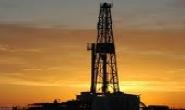Environment and Energy

There Doesn't Seem to be a Bottom to Rig Counts
Written by Brett Linton
March 25, 2016
According to Baker Hughes data from March 24, 2016, the U.S rig count for the week was 464 rigs exploring for or developing oil or natural gas. This is a decrease of 12 rigs when compared to last week, with oil rigs down 15 to 372 rigs, gas rigs up 3 to 92 rigs, and miscellaneous rigs unchanged at 0 rigs. Compared to this time last year, the 464 count is down 584 rigs, with oil rigs down 441, gas rigs down 141, and miscellaneous rigs down 2.
The Canadian rig count decreased by 14 to 55 rigs this past week, with oil rigs down 1 to 11 rigs and gas rigs down 13 to 44 rigs. Compared to last year the 55 count is a decrease of 65 rigs, with oil rigs down 7 and gas rigs down 58. International rigs decreased by 27 to 1,018 rigs for the month of February, a decrease of 257 rigs from the same month one year ago. For a history of both the US and Canadian rig count, visit the Steel Market Update website here.
About the Rotary Rig Count
A rotary rig is one that rotates the drill pipe from the surface to either drill a new well or sidetracking an existing one. They are drilled to explore for, develop and produce oil or natural gas. The Baker Hughes Rotary Rig count includes only those rigs that are significant consumers of oilfield services and supplies.
The Baker Hughes North American Rotary Rig Count is a weekly census of the number of drilling rigs actively exploring for or developing oil or natural gas in the United States and Canada. Rigs considered active must be on location and drilling. They are considered active from the time they break ground until the time they reach their target depth.
The Baker Hughes International Rotary Rig Count is a monthly census of active drilling rigs exploring for or developing oil or natural gas outside of the United States and Canada. International rigs considered active must be drilling at least 15 days during the month. The Baker Hughes International Rotary Rig Count does not include rigs drilling in Russia or onshore China.

Brett Linton
Read more from Brett LintonLatest in Environment and Energy

AISI announces publication of environmental rules for N. American steel construction products
The American Iron and Steel Institute (AISI) has announced the publication of the third version of the Product Category Rules (PCR) for North American Steel Construction Products.

Reports: Federal funding for Cliffs’ project could be slashed
Elon Musk's DOGE is determining which Department of Energy grants to advance and which ones to terminate, according to several media outlets

Flack’s Fabral launches solar division
The metal roofing manufacturer is launching Fabral Solar to integrate solar technology within commercial, residential, and agricultural structures.

Trump intends to declare ‘national energy emergency,’ focus on fossil fuels
The incoming administration said it also wants to streamline permitting and roll back regulations.

Nucor carbon targets certified by GSCC
Nucor’s “ambitious” carbon targets by the end of the decade and beyond have been certified by the Global Steel Climate Council (GSCC). The Charlotte, N.C.-based steelmaker used a base year of 2023 for its science-based emissions targets (SBET). It set an SBET of 0.975 metric tons (mt) of CO2 emissions per mt of hot-rolled steel […]

